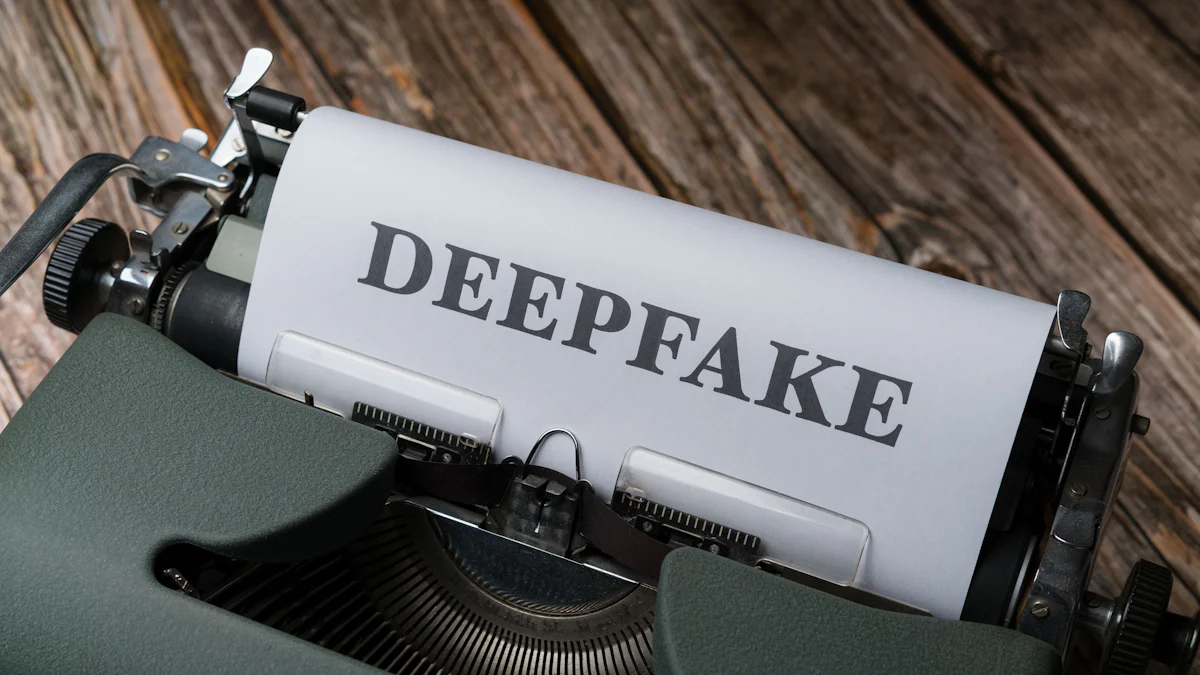The Role of Generative AI in Fake News

Generative AI refers to advanced algorithms that create content, such as text, images, and videos, without human intervention. Fake news, on the other hand, involves false information presented as legitimate news. The rise of Generative AI has intensified concerns about misinformation. These tools can rapidly produce convincing fake content, making it difficult for audiences to distinguish between truth and falsehood. Understanding this dynamic is crucial, as AI-generated false information poses a significant challenge to information integrity and public trust.
Understanding Generative AI
What is Generative AI?
Definition and key characteristics
Generative AI refers to a class of artificial intelligence that can create new content. This content can include text, images, audio, and even video. Unlike traditional AI, which follows predefined rules, Generative AI learns patterns from existing data and uses these patterns to generate new outputs. This ability to mimic human creativity makes it a powerful tool in various fields.
Examples of generative AI technologies
Several technologies exemplify the capabilities of Generative AI. ChatGPT, Jasper Chat, and Google Bard are prominent examples in content generation. These tools can produce human-like text, making them valuable for writing articles, creating dialogue, or generating creative content. In the realm of media and marketing, platforms like BuzzFeed's Infinity Quizzes and Jasper Campaigns utilize Generative AI to craft engaging and personalized content for audiences.
Applications of Generative AI
Creative industries
Generative AI has found a significant place in creative industries. Artists and designers use it to generate new ideas and concepts. For instance, AI can create unique visual art pieces or assist in music composition. By analyzing existing works, Generative AI can suggest novel combinations and styles, pushing the boundaries of creativity.
Content creation and automation
In content creation, Generative AI plays a crucial role. It can automate repetitive tasks, such as summarizing complex data or generating code snippets. Newsrooms benefit from its ability to handle data-heavy reporting, especially in areas like financial markets. Additionally, Generative AI enhances customer service by personalizing interactions, making responses more relevant and timely.
Generative AI's versatility and efficiency make it an indispensable tool across various sectors. Its ability to generate content quickly and accurately helps businesses and individuals alike to innovate and streamline their processes.
The Intersection of Generative AI and Fake News

How Generative AI Contributes to Fake News
Generative AI plays a significant role in the creation and dissemination of fake news. It automates content generation, allowing for the rapid production of large volumes of text that mimic legitimate news articles. This capability makes it easier for malicious actors to flood the internet with misinformation, complicating efforts to discern factual information from falsehoods.
Automated content generation
Generative AI tools can produce convincing narratives without human intervention. These tools analyze existing data and generate new content that appears authentic. This process reduces the time and effort required to create fake news, making it more accessible to those with harmful intentions. The ease of generating such content poses a challenge to maintaining the integrity of information online.
Deepfakes and manipulated media
Deepfakes represent another alarming aspect of Generative AI's contribution to fake news. These AI-generated videos and images can convincingly depict individuals saying or doing things they never did. The technology behind deepfakes has advanced to the point where distinguishing them from real footage becomes increasingly difficult. This manipulation of media can mislead audiences and incite public unrest, highlighting the need for vigilance and technological solutions to detect and counteract these threats.
Case Studies of AI-Generated Fake News
Several notable incidents illustrate the impact of Generative AI on fake news. These cases demonstrate how AI-generated content can influence public perception and disrupt various sectors.
Notable incidents and their impact
One significant incident involved the creation of false reports that affected financial markets. Generative AI tools produced fake news articles that led to fluctuations in stock prices, causing economic repercussions. Another case saw the use of AI-generated content in political scenarios, where fabricated stories influenced voter opinions and election outcomes. These incidents underscore the potential of Generative AI to cause widespread disruption.
Analysis of AI's role in these cases
In these cases, Generative AI served as a tool for amplifying misinformation. The technology's ability to produce realistic content made it difficult for audiences to identify the falsehoods. This highlights the dual role of Generative AI in both creating and detecting fake news. While it facilitates the spread of misinformation, it also holds the potential to develop solutions for identifying and mitigating such content. The ethical implications of using AI in newsrooms further complicate the landscape, as the risk of disseminating inaccurate information increases.
Implications of AI-Generated Fake News

Societal Impact
Influence on public opinion
Generative AI significantly influences public opinion by creating and spreading fake news. This technology can produce content that appears credible, making it challenging for individuals to differentiate between fact and fiction. As a result, people may form opinions based on false information, which can lead to widespread misconceptions. The rapid dissemination of AI-generated content can amplify these effects, reaching large audiences quickly and altering public perception on critical issues.
Challenges to democracy and trust
The proliferation of AI-generated fake news poses severe challenges to democracy and trust. When citizens base their decisions on misinformation, the democratic process suffers. Voters may make choices influenced by fabricated stories, undermining the integrity of elections. Additionally, the erosion of trust in media sources becomes a significant concern. As Generative AI continues to produce realistic fake content, individuals may become skeptical of all news, questioning the credibility of legitimate journalism. This skepticism can weaken the foundation of informed decision-making, which is essential for a healthy democracy.
Ethical and Legal Considerations
Responsibility of AI developers
AI developers hold a crucial responsibility in addressing the ethical implications of Generative AI. They must ensure that their technologies do not contribute to the spread of misinformation. Developers should prioritize ethical considerations in their projects, balancing innovation with the need to prevent harm. By implementing safeguards and transparency measures, they can help mitigate the risks associated with AI-generated fake news. Moreover, developers should collaborate with journalists and fact-checkers to create tools that enhance the accuracy and reliability of information.
"Balancing AI innovation with ethics is key to fighting misinformation."
Regulatory frameworks and policies
Establishing robust regulatory frameworks and policies is essential to manage the impact of Generative AI on fake news. Governments and institutions must develop guidelines that address the ethical and legal challenges posed by AI-generated content. These policies should focus on accountability, ensuring that creators of Generative AI tools adhere to standards that prevent misuse. Additionally, regulatory bodies should promote collaboration between tech companies and media organizations to develop effective strategies for detecting and countering misinformation. By fostering a transparent culture and adopting responsible practices, society can better navigate the complexities of AI in the media landscape.
Mitigating the Impact of AI-Generated Fake News
Technological Solutions
AI for detection and verification
AI plays a crucial role in detecting and verifying fake news. Developers have created AI tools that identify and flag misinformation. For example, Omdena collaborated with partners to develop an AI solution in Liberia. This project aimed to enhance information integrity in a region where misinformation could have serious repercussions. AI tools can cross-reference news stories with credible sources, helping journalists quickly identify inaccuracies. This approach maintains ethical journalistic standards and ensures the public receives accurate information.
Collaborative efforts between tech companies
Tech companies must collaborate to combat AI-generated fake news effectively. By working together, they can develop robust systems to detect and counter misinformation. Businesses should deploy strict measures to verify potential falsehoods before AI content reaches the public. A transparent culture that facilitates methodical cyber prevention is essential. This proactive approach upholds data integrity and cybersecurity, preventing the proliferation of misinformed data.
Educational and Policy Approaches
Media literacy programs
Media literacy programs are vital in educating the public about fake news. These programs teach individuals how to critically evaluate information sources. By understanding how AI generates content, people can better discern fact from fiction. Media literacy empowers individuals to question the credibility of news stories, reducing the impact of misinformation. Educational initiatives should focus on developing critical thinking skills, enabling people to navigate the complex media landscape confidently.
Government and institutional policies
Governments and institutions must establish policies to manage AI-generated fake news. Regulatory frameworks should address the ethical and legal challenges posed by AI content. Policies must ensure accountability, requiring creators of AI tools to adhere to standards that prevent misuse. Collaboration between tech companies and media organizations is crucial for developing effective strategies. By promoting responsible practices and fostering transparency, society can better navigate the complexities of AI in the media landscape.
Generative AI's role in fake news presents a significant challenge due to its increasing prevalence. This technology can rapidly produce false information, complicating efforts to maintain credibility and fact-based content. To address this issue, stakeholders must take proactive measures.
Ethical Vigilance: Developers and media professionals should prioritize ethical considerations to combat misinformation and disinformation effectively.
Collaborative Efforts: Governments, tech companies, and educational institutions must work together to create robust regulatory frameworks and media literacy programs.
"The integration of AI in the media is a call for ethical vigilance to combat misinformation and disinformation."
By taking these steps, society can better navigate the complexities of AI-generated content and protect the integrity of information.
See Also
Neural Networks' Impact on Generative AI Development
The Essence of Generative AI Creation
Utilizing Generative AI in Content Marketing Strategies
